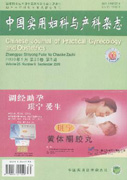Abstract: Objective To explore the diagnostic value of MRI in the evaluation of para- cervical infiltration, vagina involvement and lymph node involvement in the surgical treatment for patients with cervical cancer. Methods Forty-eight cases receiving surgical treatment were chosen in this study who were first visit patients as cervical cancer .Study the sensitivity, specificity, positive predictive value, negative predictive value, degree of accuracy in the assessment of paracervical infiltration, vagina involvement and lymph node involvement respectively using the postoperative pathology as the gold standard. And surgical - pathologic staging was wsed as gold standard to study the accuracy of MRI staging and preoperative clinical staging.Results For MRI in the surgical treatment of patients with cervical cancer with lymph node metastasis,the sensitivity,specificity, positive predictive value, negative predictive value,degree of accuracy were respectively 65%, 94%, 85%, 83% and 83%,for parametrial invasion the sensitivity,specificity, positive predictive value, negative predictive value, degree of accuracy were respectively 50%,91%,33%,95%,88%, for vaginal invasion the sensitivity, specificity, positive predictive value,negative predictive value,degree of accuracy were respectively 50%,78%,43%,82%,71% .Gynecological examination parametrial invasion in early stage cervical cancer sensitivity、specificity、 positive predictive value、 negative predictive value、degree of accuracy were respectively 0,100%,0、92%,92%,vaginal invasion the sensitivity,specificity, positive predictive value,negative predictive value and degree of accuracy were respectively 75%,100%,100%,92%、94%. The overall clinical staging accuracy was 81%, MRI staging overall accuracy was 67%, and clinical -MRI staging overall accuracy was 92%. Conclusions MRI has a big advantage for cervical cancer with lymph node metastasis;for those with parametrial invasion and vaginal invasion it has good negative predictive value and specificity.The MRI combined with clinical staging is better that the separate use of the two diagnostic methods in improving staging accuracy .

